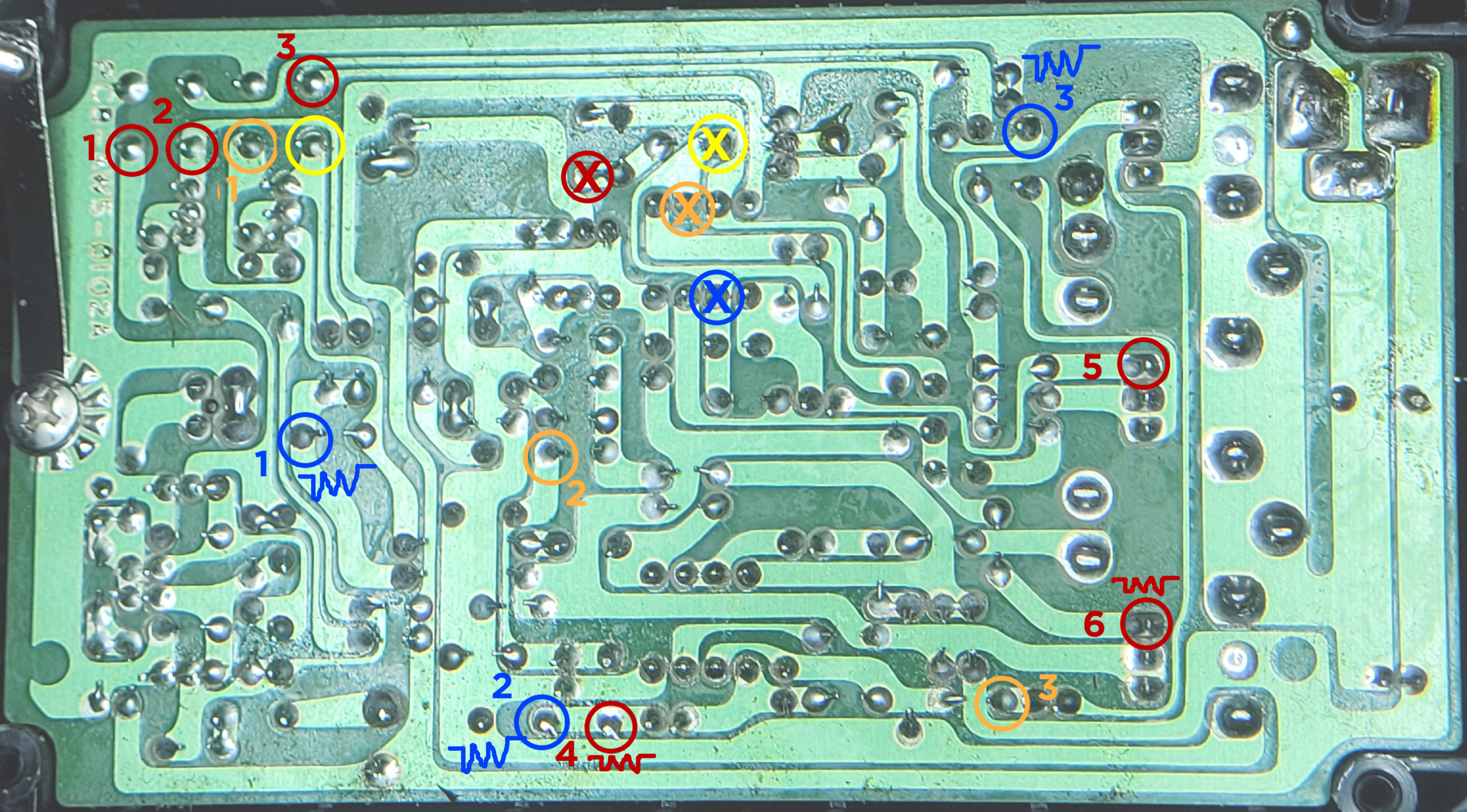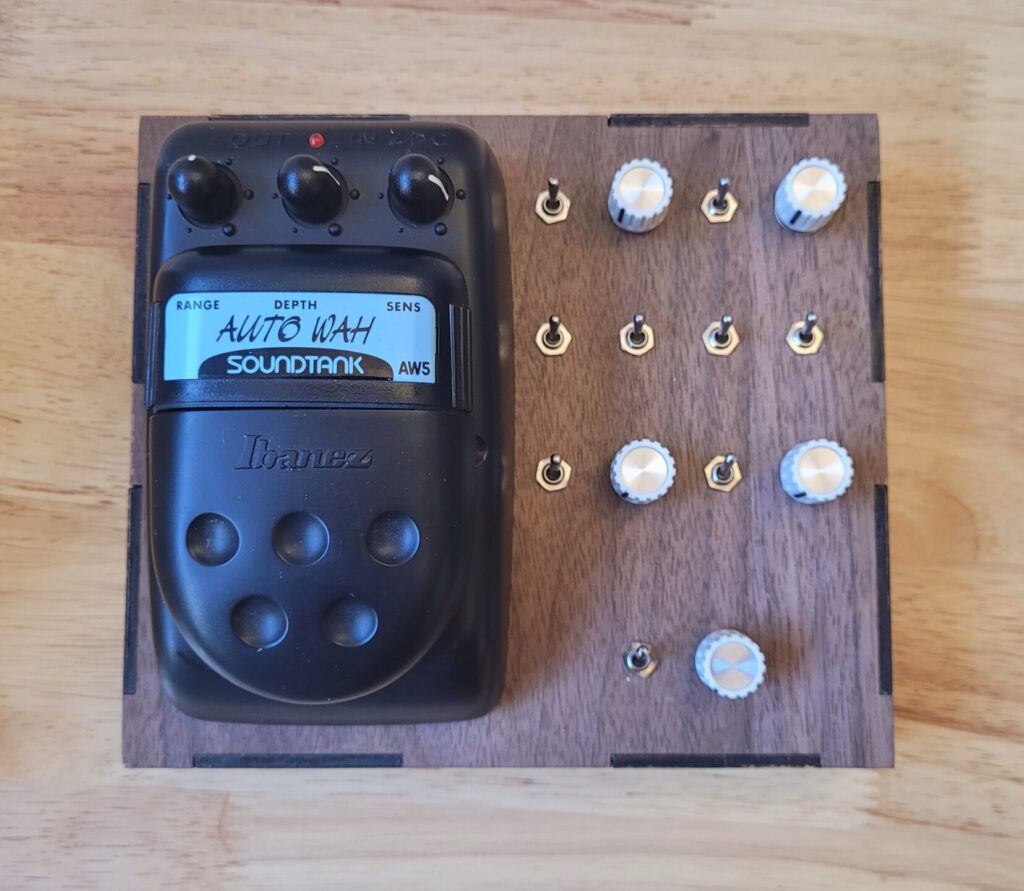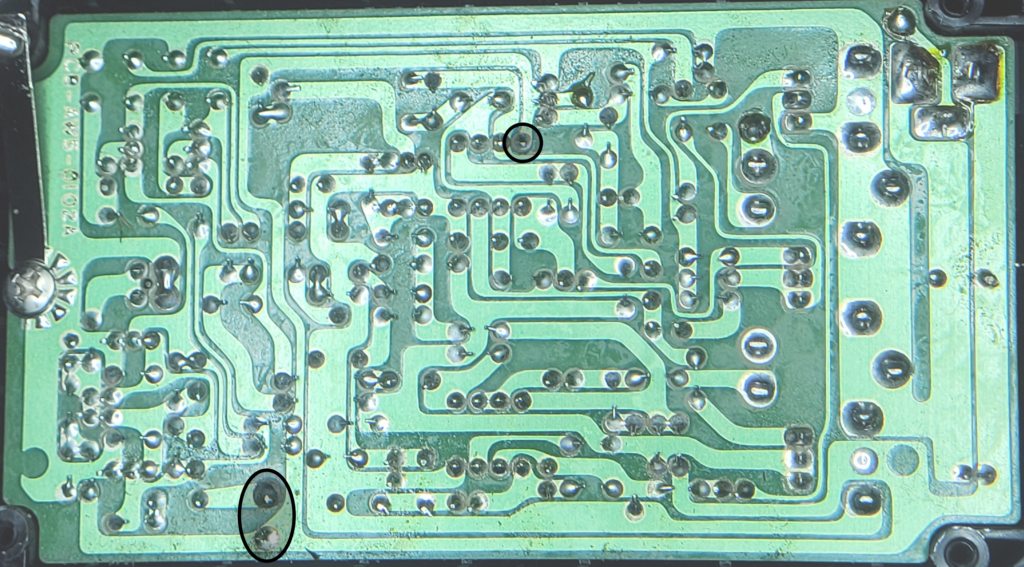Bending Guide

Using This Guide
Bending Guides show specific bends that we have identified as interesting. Color-coded circles indicate separate bending points that all connect to a common point. We call this the Point of Origin (or POO) and indicate the POO with a circle marked with an “X”.
Occasionally a circle will be marked with a zigzag line . This means that we found it useful to add a potentiometer between this point and the POO.

Danger Zone
Two spots that we recommend avoiding. The single point towards the top of the image is the positive power supply for one of the op amp ICs. Whenever we connected anything to it, it turned off the auto wah, which was annoying.
The bottom two points connect to the breakout PCB that has the LED indicator. Connecting things to these points had a tendency to overload the LED.
(Embarrassingly, we killed two LEDs before we made the point of marking those spots on the board as reminder. We really should have known better…)

Updated for 2025
Built from: Ibanez Soundtank AW5 Auto Wah
Number of bends: 5 13
Description: The pedal that started it all. The first bent pedal produced by BentPedals.com. The Bruiser has three distortion bends and two tone generating bends.
** New! **
It seemed only fitting that the first pedal ever bent for BentPedals.com would be the first pedal revisited and updated for 2025.
We’ve updated the bending guide with a better image that, hopefully, provides a little more clarity around the bending points. We’ve also done some additional exploration and better documented what each point does. Scroll down for audio samples.
The original bending guide included the Yellow bending point and Red 1, 2, 3 and 5 bending points. Yellow and Red 1 were the tone generating bends, which are likely from self-oscillating feedback. Red 2, 3 and 5 were the distortion bends.
While revisiting the original bending guide, we weren’t able to get much out of the Red 2 bend. It’s possible there was a design change, and the circuit isn’t an identical match, or there’s a functional issue with this pedal (or the first pedal, for that matter).
It’s also very possible it’s just a difference in taste. What appeared to be a worthwhile bend 20 years ago, might not be holding the same favor today.
Regardless, that Red POO has been augmented with two new distortion bends: one that is intensely brutal (Red 4) and one that retains some of the envelope filter character of the auto wah (Red 6).
New to the updated bending guide is the Blue POO, with three new distortion options: completely destructive, high gain and trebly (Blue 1), crushing, but dynamic (Blue 2) and filtery with oscillating feedback (Blue 3).
Also new is the Orange POO with one resonant high-pass filter (Orange 1), a piercing distortion with oscillating feedback (Orange 2) and a different flavor oscillating feedback distortion (Orange 3).
Depending on which bends are used, this can be readily used as a standalone noise instrument, or a unique distortion pedal.
Demos
The following demos all feature a drum machine running through the CBAW. Each demo starts with a clean signal, then the original auto wah is turned on, then the bend is connected. There is slight compression and limiting on the signal, but no additional effects.
Red 1 (Original)
Red 2 (Original)
Red 3 (Original)
Red 4 (New)
Red 5 (Original)
Red 6 (New)
Yellow (Original)
Blue 1 (New)
Blue 2 (New)
Blue 3 (New)
Orange 1 (New)
Orange 2 (New)
Orange 3 (New)
Did you build this? Let us know in the comments below!

Leave a Reply